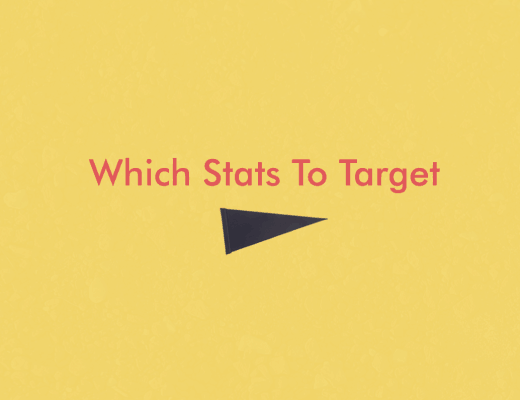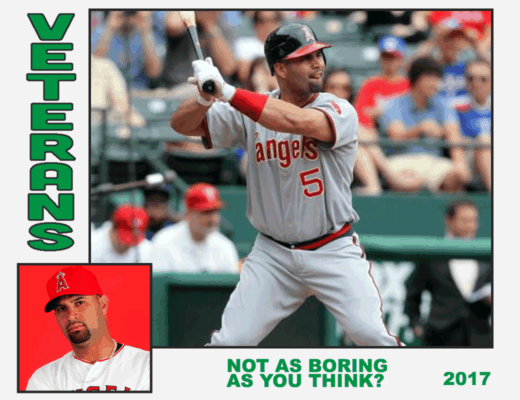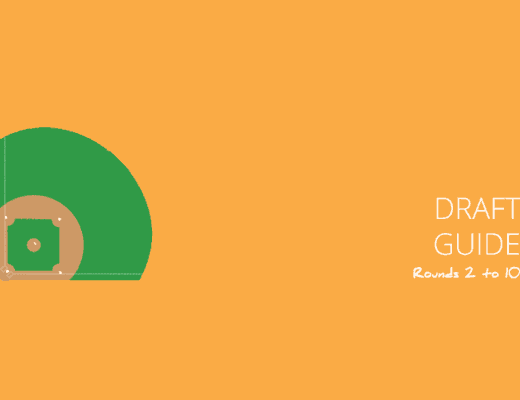You probably remember learning about supply and demand at some point in your academic life. The idea is that the quantity of a product that’s on the market and the demand for that product have an effect on the price of it. You need not know everything about economics but this little concept is helpful to keep in mind for fantasy baseball owners in rotisserie leagues.
This concept comes to life when fantasy baseball owners talk about position scarcity in drafts. Though the top catcher may have less production than a mid-range outfielder, his price tag is fairly high because the market for the catchers is very thin and the demand is there because every team needs to own at least one catcher. Balancing production versus position scarcity is one of the major decisions fantasy owners have to make at their drafts. Despite position scarcity being a fairly known concept in fantasy circles, we don’t talk as much about scarcity of the 5×5 roto stats.
In Round 1, you have the entire draft pool at your disposal and can draft for any stat that you want. You want a guy who can grab 40 SB? Sure! How about a 40 HR guy instead? Yup, there’s one on that shelf right there! It’s great. Everything is in stock and you are free to do as you please.
By Round 2, we already start to see some stats become more scarce. You want a 40 HR guy now? Well, you should have looked for that in Round 1 because there’s only 30 HR guys left. But, hey, there’s still lots of stolen bases on the shelves!
All of the draft choices in each round end up limiting the amount of production available for each roto stat from that point forward. If you went heavy on stolen bases early, you may find yourself scrambling around to find home runs later. Because, just like with position scarcity, the demand for each of the stats is there as you want to compete in all of the stat categories if you can. But as you go through the draft and players fly off the board, which stats are still available? And what stats are primarily available in the early rounds? Let’s see:
 |
| The trend in projected value for each stat of players drafted from Rounds 1-25 (of a 12-team league) |
What you see above is a lot of colorful squiggly lines which represent the value available for each stat throughout the draft. The first thing to notice is the purple line for SB’s. It stays fairly flat throughout the entire draft while the other stats start out very high then dip down and drop out. With SB’s, you can find nearly as much value in Round 21 as you can find at the start of the draft. This is significant because it means you shouldn’t worry at all about finding stolen bases early on. If you had the choice between Giancarlo Stanton with a .280 AVG, 40 HR and 5 SB versus Justin Upton with a .280 AVG, 25 HR and 20 SB then you shouldn’t really put much extra value on those SB’s at that point and draft Stanton there. It’s a lot easier to make up that 15 SB difference than the 15 HR difference as you go through the draft. Basically, don’t worry about getting guys who can contribute in all five categories in the first few rounds. Draft four-category guys then worry about stolen bases later. They’ll still be there but the homers and batting average may not be.
The other thing to notice here is that Runs and RBI’s start out the highest but end up being nearly impossible to find at the end of the draft as they dip way below the other stats. As a caveat to this fact, I’ll note that is is very hard to specifically draft for RBI’s and Runs. Those two stats are the result of opportunity. A batter has more direct control over HR, AVG and SB. A player who gets on base more will hopefully score more Runs and a player who hits more HR’s will hopefully get more RBI’s. To specifically target RBI’s or Runs is a fool’s errand that will burn you.
That being said, the thing to notice about the HR and AVG line is that they have absolute peaks in value at the beginning of drafts, as expected. That’s where you’ll find the .300 hitters or 30+ HR guys (or, ideally, ones who can do both). You need to spend your first few rounds focusing on these two categories because it becomes much harder to find positive value in both of them as the draft goes on. By Round 6, the value for both stats dips to lower levels and then evens out for a long stretch. This may be the time to turn your attention to pitching as the hitting stats remain stable from here for quite a while.
In looking at the projected value across the roto stat categories for hitters, here are my main takeaways:
- Don’t reward guys who can contribute in SB’s at the expense of HR’s and AVG in the early rounds
- In the first five rounds (of a 12-team league) at least, focus totally on getting high HR and high AVG players
- Turn your attention towards pitching at some point around the sixth round (paying attention to what value is still around, of course, because if HR/AVG value is still there then grab it now)
- As the draft goes on, start looking at guys who will help you in SB’s. You may not win this category outright but you want to compete while you hopefully dominate the other four categories
- Don’t focus specifically on RBI’s and Runs. If you draft for HR/AVG then these will be byproducts of those categories




bf381296-91cb-11e2-867a-000f20980440
03/21/2013 at 2:06 AMThe only argument that I can see against this type of strategy is that while there are more SB guys available late, typically they are one category guys. In other words, as the graph shows, the R/RBI/HR will not be there with these guys late in the draft. So in the end is it better to have a few CarGo/McCutchen/ types where they go 25/25 or a Stanton and Coco Crisp who between the 2 will still get to that 50/50 total? The difference in preference is found in whether you want to put your faith in guys who excel at a specific stat. Stanton excels at HR's. If he gets hurt, you won't replace his 40 hrs. If CarGo gets hurt you might be able to replace his steals and maybe 10-15 of his hr total. Thus CarGo is the safer pick in terms of your reliance upon his projected stats and this is generally reflected by his ADP being higher than that of Stanton and other bombers like Bautista. Maybe we are all wrong in valuing the 5 category guys as the most valuable and I can't argue that you can't find steals late because you certainly can. But at what cost? Those steals guys you are taking late basically won't provide value in any of the other categories. Again, if you build your team around guys who can go 15/15, 25/10, 25/5, you aren't relying on any single player to provide all of your value in a category and therefore when the injury bug hits (and it will) your team will be less affected and will still be able to reach your season long projections in all categories.
Luke
03/26/2013 at 4:10 PMYou make a lot of points here… First off, I'll say this strategy is mainly built around a deep league. My main league is a 5 OF league so I'm looking at those Coco Crisps and Juan Pierres towards the end of a draft to fill out my roster. Even if I went for speed early, you're going to fill your roster up with SOME type of unbalanced player at that point and SB's are the most abundant at that point. In a 3 OF league, this wouldn't be the case.
As far as saying that CarGo is more replaceable than Stanton, I think that illustrates my point exactly. You can piece together the production that CarGo can give you without owning him but you can't piece together Stanton's production. I don't draft my team with the fear of an injury motivating me. Sure, that might burn me sometimes when injury strikes but it's hard to account for that unless you draft a historically injury-prone player.